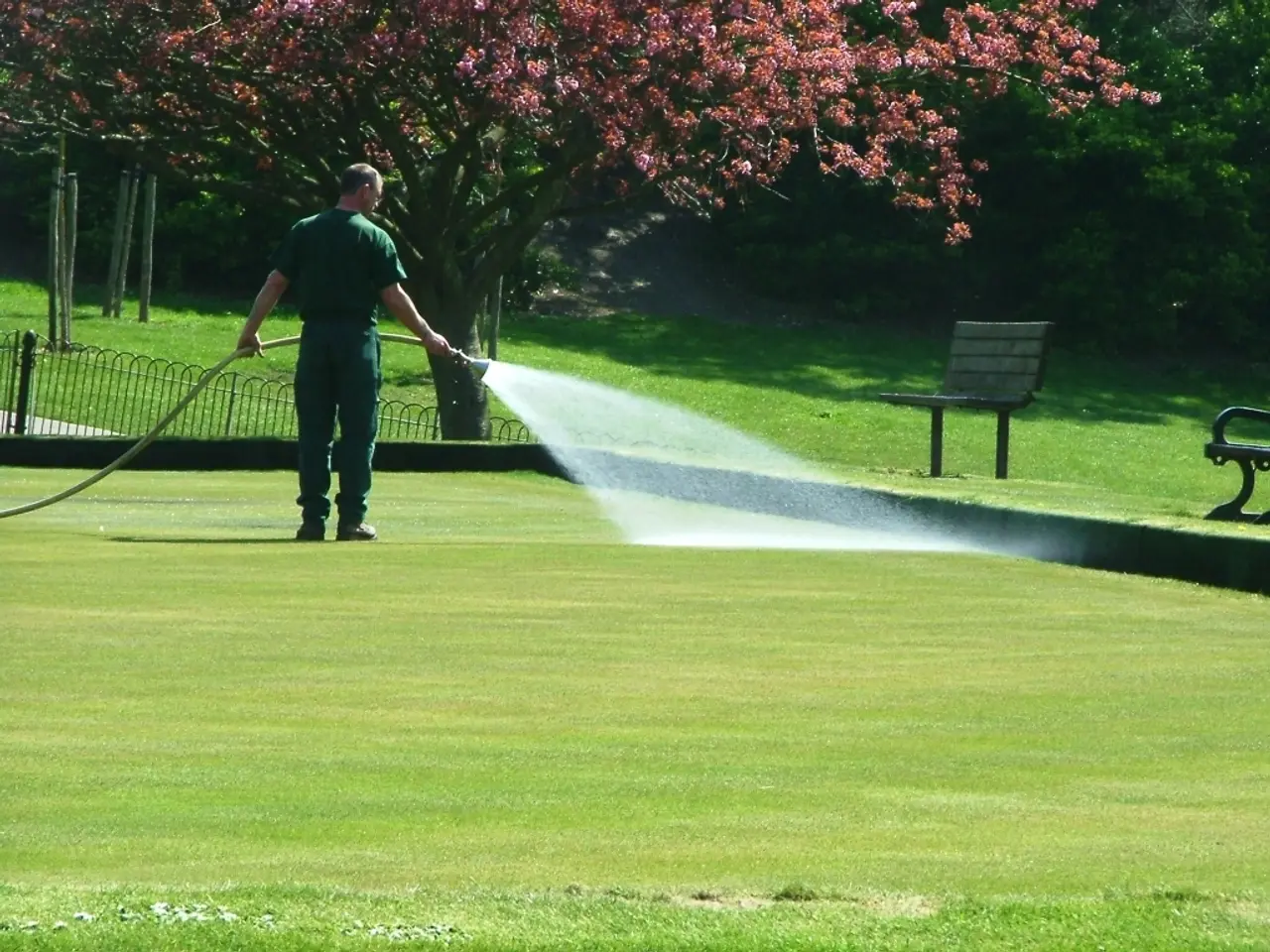Frequency for Watering Drought-Resistant Plants in the Garden, as Perked by Experts
Drought-tolerant plants have become a popular choice for gardeners due to their ability to thrive in dry conditions. Here's a guide to help you water these resilient plants effectively, whether they are in the ground or in pots.
After the first year, drought-tolerant plants in the ground require less frequent but deeper watering. Typically, they need watering every one to two weeks, depending on weather and soil conditions. In contrast, drought-tolerant plants in pots generally need watering more often, as container soil dries out faster.
For instance, rosemary in pots may need a thorough watering every one to two weeks or when the top 1-2 inches of soil feel dry. It's crucial to water deeply to reach the entire root ball, avoiding shallow watering that only wets the surface.
Key points for both in-ground and potted drought-tolerant plants after the first year are:
- Water deeply rather than frequently to promote deep root growth. - Check soil moisture by feeling 1-4 inches down; water when soil feels dry at root depth. - Adjust frequency based on weather: increase watering in hot, windy, or dry conditions, and reduce if recent rain has sufficiently moist soil. - Avoid overwatering, especially in pots, as it can cause root rot.
In hot weather, water drought-tolerant plants in pots every other day. Watering early in the morning or evening is recommended to avoid evaporation. For added protection, mulching with gravel helps reduce water loss for drought-tolerant plants, as does mulching with compost and leaf mould for other plants.
Planting drought-tolerant plants in autumn and spring encourages them to put roots down into the soil to find water. During their establishment phase (first year), they may require more frequent watering. The newly planted drought-tolerant plants in the National Trust's Beningbrough garden are only watered for the first year.
When planting in pots, it's important to include soil in the mix to help retain water. Regular watering helps maintain the health and performance of drought-tolerant plants in pots. Feeding them with a seaweed feed can also help maintain their health and performance. For example, envii SeaFeed Xtra, which can be found on Amazon for £13.95, is a suitable option.
Prolonged dry spells in hot weather can cause stress symptoms such as yellowing or reddening foliage and a noticeable drop in flowering for drought-tolerant plants in pots. Watch out for windy weather as it can be very drying for these plants.
In summary, drought-tolerant plants need some water to survive. Shallow surface roots are more vulnerable to hot sun and drought, so it's best to water them infrequently but deeply. Using a pipe that reaches the roots is the most effective way to water trees and large shrubs. With this approach, drought-tolerant plants can maintain healthy root systems and avoid stress from both underwatering and overwatering.
| Plant Location | Watering Frequency after 1st Year | Notes | |----------------|----------------------------------------------------|------------------------------------------------------------| | In-ground | Every 1-2 weeks | Deep watering; adjust for weather and soil type | | Potted | Every 1-2 weeks or when top 1-2 inches dry | Soil dries faster; watch for signs of stress or dryness |
- Caring for drought-tolerant plants in home-and-garden settings, particularly in pots, requires regular watering though not as frequently as traditional garden plants.
- To maintain the health and performance of drought-tolerant plants in pots, gardeners should water them deeply and adjust the frequency based on weather conditions and soil moisture levels.




